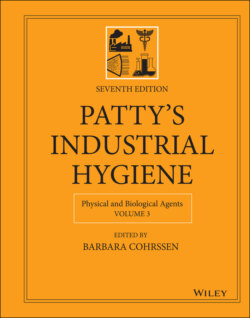Читать книгу Patty's Industrial Hygiene, Physical and Biological Agents - Группа авторов - Страница 85
4.3 Class 3
ОглавлениеClass 3 lasers pose a hazard to the eye, since the aversion response is insufficiently fast to limit retinal exposure to a momentarily safe level, or if damage to other structures of the eye (e.g. cornea and lens) could take place. Skin hazards normally do not exist for incidental exposure. Such lasers would rarely pose a realistic fire hazard. Examples of Class 3 lasers are many research lasers and military laser rangefinders.
A special subcategory of Class 3 is termed “Class 3R” (once termed Class 3A in US standards). The remaining Class 3 lasers are termed “Class 3B.” Class 3R laser products are those with an output power between one and five times the “accessible emission limit” (AEL) for the Class 1 or Class 2 (if the emission is between 400 and 700 nm). Class 3R should be thought of as a transitional class, since the laser beam irradiance exceeds the applicable EL, referred to as the “MPE,” but injury is unlikely from a standpoint of probabilistic risk assessment, i.e. the likelihood is very small that the eye will be perfectly positioned, focused for worst‐case viewing (retinal hazards) and the person is particularly sensitive (19). The “R” in Class 3R refers to “reduced requirements” for product safety standards and very limited control measures are required for the user. Examples are many laser alignment and surveying instruments. In the 1.2–1.4 μm spectral band, the Class 3R may not exist for some CW lasers where the range between Class 1 and Class 4 becomes very small.
